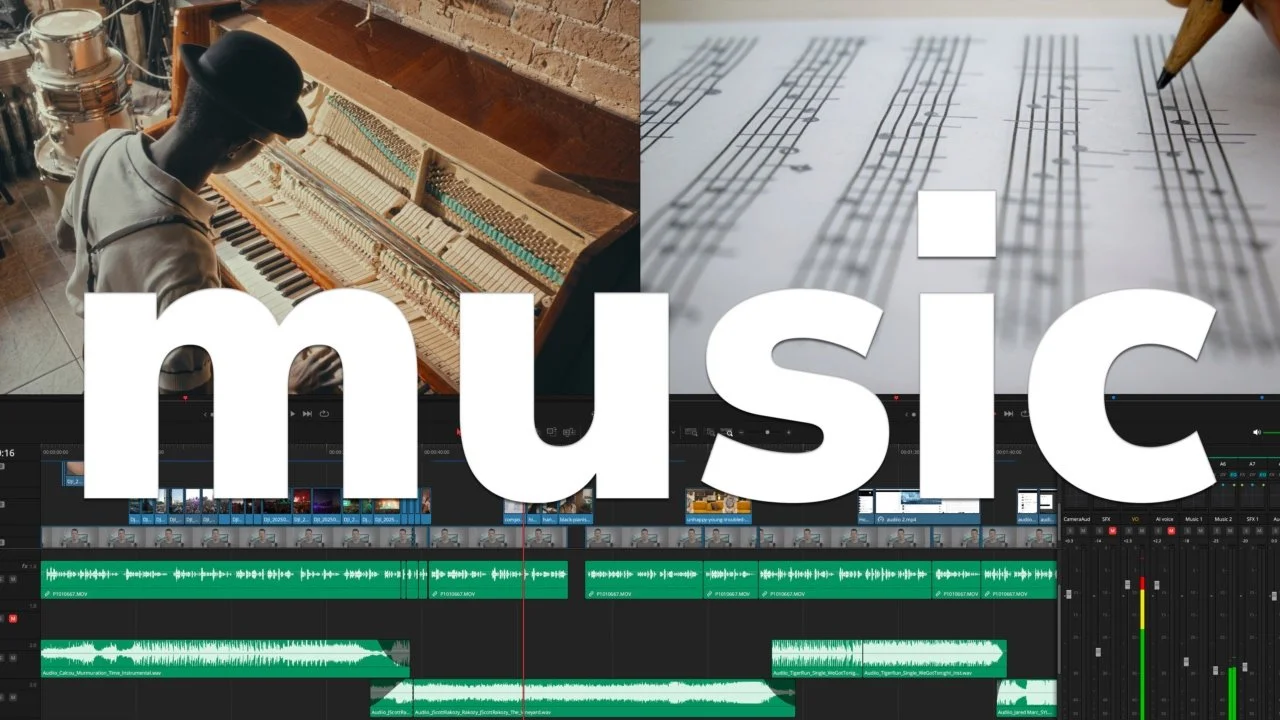Mastering Exposure and Skin Tones in Resolve Studio feat. MONONODES UTILITY DCTL 🎥
🎥 As filmmakers, we pour our hearts and souls into every project. We spend countless hours crafting narratives, capturing stunning visuals, and perfecting every edit. But after all that hard work, have you ever delivered a project and been left with a nagging feeling? That little voice in your head asking: "Was the exposure really spot-on for every scene? Were the skin tones consistent? Did the colors hold up across the entire piece?" It's a frustrating, all-too-common feeling, isn't it? 😩
This uncertainty stems from the inherent complexity of video post-production. What looks great on your monitor might appear crushed or inconsistent on a client's TV. Subtle shifts in lighting or camera settings can lead to jarring color discrepancies, especially with critical elements like skin tones. This guessing game not only eats into your time with endless revisions but can also impact your professional reputation and client satisfaction.
Watch the full video
Enhancing Your Analysis Tools 🛠️🎬🎥
While tools like scopes are fundamental for color correction, they can sometimes feel abstract, requiring a deep understanding of waveforms and vectorscopes. What if there were a more intuitive, faster way to nail your exposure and color consistency?
Enter False Colors. False Colors are a powerful visual representation of the different exposure values within your footage. They paint your image with a spectrum of colors, each corresponding to a specific exposure level, instantly highlighting areas that are underexposed, overexposed, or perfectly exposed. It’s like an X-ray for your video's light!
DaVinci Resolve Studio, a staple in many filmmakers' workflows, offers a built-in False Color plugin. This allows you to choose from various styles or even customize your own. Typically, cool blues and magentas indicate underexposed areas, while greens and pinks highlight the mid-tones, crucial for balanced skin tones. Yellow and red, on the other hand, scream out when highlights are dangerously overexposed.
Discovering the Game Changer: MONONODES UTILITY DCTLS ANALYSIS TOOL 🚀
While DaVinci Resolve's built-in tools are great, during my research, I stumbled upon an even more comprehensive solution developed by the brilliant Stefan Ringelschwandtner: the UTILITY DCTLS ANALYSIS TOOL by Mononodes.
This tool has become my absolute go-to for pre-delivery analysis, and for good reason. It references the industry-standard Rec.709, ensuring your footage looks consistent across most viewing platforms. But what truly sets it apart is its comprehensive suite of integrated analysis tools. You can check skin tones, exposure, and saturation simultaneously or view them side-by-side for granular control.
The Magic of Precision: How Mononodes UTILITY DCTLS Solves Your Problems ✨
Let's break down how this DCTL tackles those common filmmaker pain points:
Nailing Skin Tones Every Time: The dedicated skin tone indicator is a revelation. Yellow signifies the ideal skin tone, making it incredibly easy to quickly identify any unwanted magenta or green undertones. Imagine you’re cutting between shots of a character, and suddenly their face shifts from a healthy yellow to a slightly magenta hue. This tool instantly flags that color consistency issue, allowing you to address it before it becomes a problem. No more guessing if your talent looks natural and consistent across your entire project.
Effortless Exposure Consistency: The exposure heatmaps are pure genius. They allow you to rapidly adjust exposure by directly referencing the faces in your images. For example, if one scene appears to have more red (indicating overexposure) on a face than another, it immediately signals a difference in brightness that needs correction for a seamless edit. This tool effectively identifies those subtle exposure issues that would otherwise require tedious frame-by-frame analysis with a waveform.
Saturation Control: The same principle applies with the Saturation Checker. Just like with exposure and skin tones, you get a clear visual representation of your saturation levels. This ensures your colors aren't oversaturated and don't "clip," leading to a muddy or unnatural look, especially on different display devices.
With the MONONODES UTILITY DCTLS, I've banished the fear of my footage appearing "crushed" or inconsistent on a client's TV. This tool empowers me to ensure my footage stays within safe levels and looks consistent across all Rec.709 targets, providing cohesive matching from scene to scene. It's truly a game-changer for mastering analysis prior to final delivery.
Experience the Magic for Yourself
This tool isn't just a technical utility; it's a game-changer for your creative workflow and client relationships. Experience the magic yourself and learn to achieve flawless exposure and beautiful skin tones in no time. Stop guessing, start delivering with confidence.
👉 Learn more here: https://go.christianwmeyer.com/MONONODES UTILITY DCTLS
🎨 Graded using Dehancer Pro 🎥
To get a 10% discount on your purchase.
Use the code CHWM10
👉https://go.christianwmeyer.com/DehancerPro
🎬 🎹 Royalty Free Music 🔊
Get 70% off Audiio Pro for your first year.
👉https://go.christianwmeyer.com/AudiioPro
I have been using Audiio since the start of my YouTube channel






